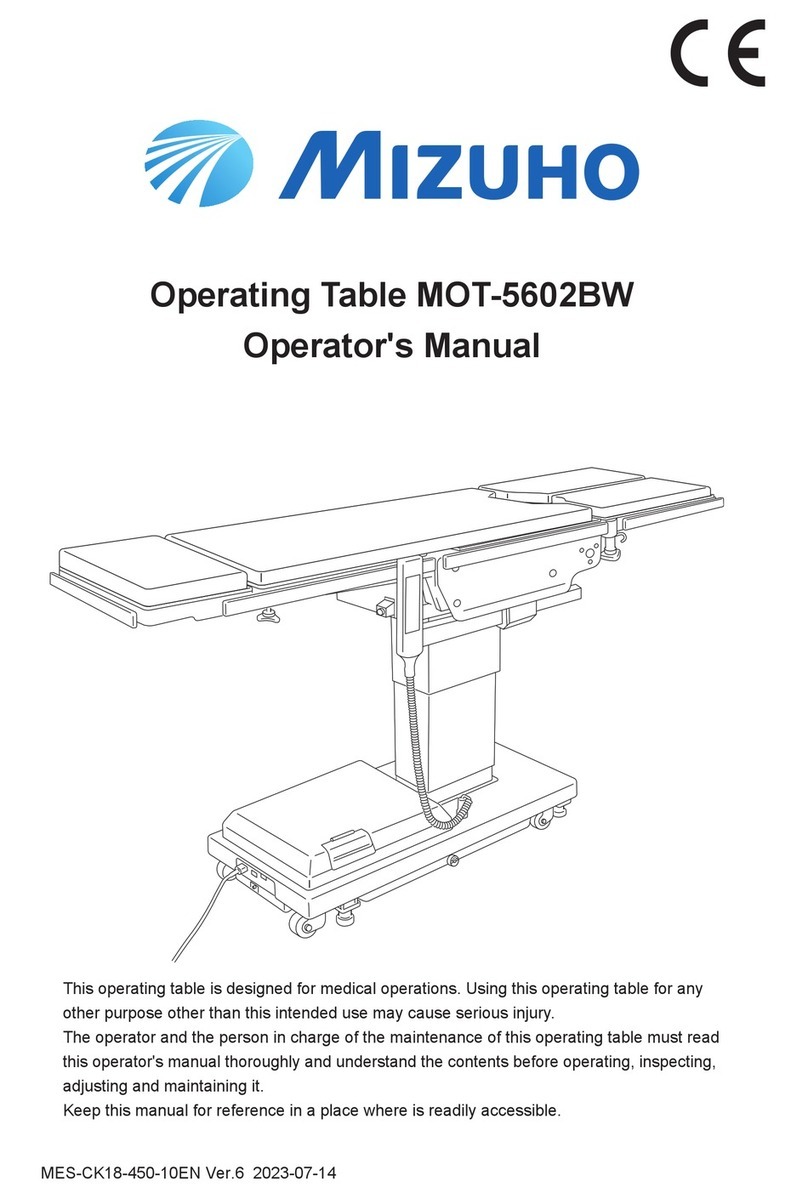
Page 9
SPECIAL USER ATTENTION
Prior to use, all personnel that may operate this
table must be instructed in the correct opera-
tional procedures. This table is designed for use
by trained and qualified personnel for human
medical purposes only.
Initial use should not begin until after the users
have been instructed by the manufacturer's
representative.
A routine instructional program must be imple-
mented by the facility for proper usage instruc-
tions for all personnel that may operate this ta-
ble.
The maximum lifting capacity of the 6702 table
is 540 kg and the maximum articulation weight
capacity is 450 kg. When lifting or articulating
large patients, pay close attention to the patient
position as well as the positioning guidelines
and limitations listed in the operation instruc-
tions.
The extreme positioning capabilities of the 6702
Table requires special attention for possible inter-
ference points when using multiple function posi-
tioning. As with the operation of any surgical table, a
certain amount of care should be exercised to posi-
tion the patient safely. Although the thick pads and
sheets substantially protect the patient, pinch points,
located at the joints of the top section should always
be considered. BE SURE THAT THE ARMS,
HANDS AND FINGERS OF THE PATIENT AND
THOSE OF THE OPERATING ROOM
PERSONNEL ARE CLEAR OF ALL MOVING
PARTS BEFORE MOVING THE TABLE. Proper re-
straints should always be used for patient safety.
Certain accessories such as the Uro-Drain Tray,
Armboards and X-Ray top can be damaged when
changing the position of the table top sections. Al-
ways look first to see if a desired movement is going
to interfere with any accessories in use.
The operator has the ultimate responsibility of pre-
venting damage to the table and surrounding
equipment or possible injury to the patient or staff.
The operator must ensure proper positioning is
maintained to prevent compromising respiration,
nerve pathways or circulation.
In general, common sense will dictate when there is
a potential hazard.
The following precautions should be reviewed
by all personnel prior to operating the table.
WARNING
Indicates a possibility of personal injury.
CAUTION
Indicates a possibility of damage to
equipment.
NOTE
Indicates important facts or helpful
hints.
This equipment is intended for use by healthcare
professionals only. This equipment may cause radio
interference or may disrupt the operation of nearby
equipment. It may be necessary to take mitigation
measures, such as re-orienting or relocating the
table or shielding the location.
Do not use worn or damaged accessories, they
represent an injury hazard.
Remove possible obstacles before lowering or tilting
the operating table.
Do not place objects on the base of the table, a
danger of damage exists during positioning.
Use caution when articulating the table top, pinch
hazards exist.
































